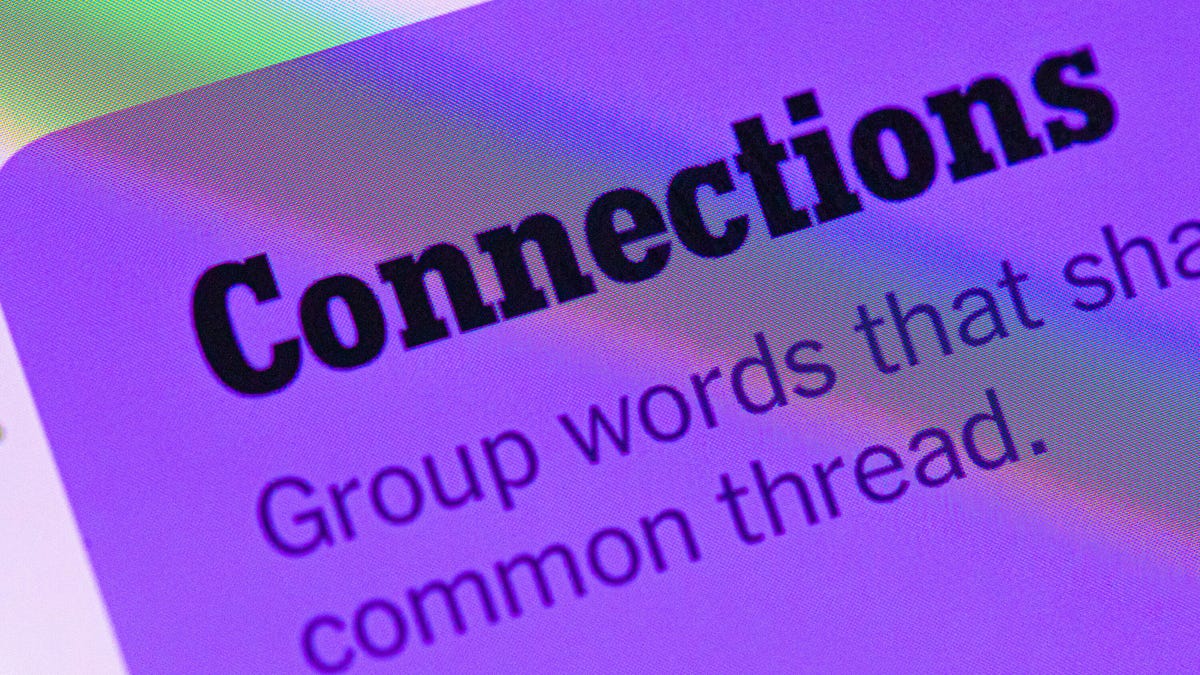Technologies
A Room With a View: Check Out This Stunning Aurora From the ISS
Astronaut Don Pettit captured the footage while the ISS was flying backward.

There are some stunning views out there, like hotels that let you see the New York City skyline and resorts with gorgeous mountain or ocean views. But there are few places with a view as absurdly cool as the International Space Station. On Wednesday, astronaut Don Pettit — who is also a noted photographer and inventor of the zero-G coffee cup — took a gorgeous time-lapse video of the ISS as it flew over an aurora.
The video, viewable on X, is about 50 seconds long. It shows the ISS orbiting around Earth. It’s a cool shot all on its own, but around the 27-second mark, the aurora starts to show up from the left. A few short seconds later, viewers are greeted with what looks like a snaking, flowing mist covering part of the Earth.
Then, the Earth is awash in a green glow that looks like something out of a movie or a video game. As quickly as the aurora shows up, it leaves the camera’s view, and the POV is stretched back into space.
Despite its misty appearance, the aurora borealis is anything but. The glowing effect is caused by an interaction between the sun’s solar winds and Earth’s magnetic field. These interactions most often happen when the sun emits coronal mass ejections, which massively eject plasma into the Earth’s magnetic field.
With the sun at its solar maximum and amid aurora season, it may only be a matter of time before those green lights stretch far down into the US, like we saw last year.
Moving backward through space
Pettit was able to get the time-lapse video because the ISS is currently flying backward. It doesn’t typically do this, but the space station was expecting company. On Tuesday, the Soyuz MS-27 spacecraft launched with NASA astronaut Jonny Kim and Russian cosmonauts Sergey Ryzhikov and Alexey Zubritsky, with the final destination being the ISS. Flipping the entire space station 180 degrees helped to facilitate the docking maneuver, which was successfully completed 3 hours after launch.
In addition to flipping 180 degrees, the ISS also intentionally lowers its altitude, as hinted by Pettit in his tweet when he said «changes in altitude, changes in latitude.» While this isn’t a maneuver that the ISS performs often, it is performed virtually every time a Soyuz spacecraft launches to the ISS. With the slight drop in altitude (usually around one kilometer) and the reorientation, it allows the Soyuz to dock just a few hours after launch, instead of longer like some other spacecraft.
Technologies
Today’s NYT Mini Crossword Answers for Monday, Oct. 20
Here are the answers for The New York Times Mini Crossword for Oct. 20.

Looking for the most recent Mini Crossword answer? Click here for today’s Mini Crossword hints, as well as our daily answers and hints for The New York Times Wordle, Strands, Connections and Connections: Sports Edition puzzles.
Need some help with today’s Mini Crossword? It was a tough one for a change! That 1-Across is going to slyly trick you as to what a mouse is. So if you need the answers, read on. And if you could use some hints and guidance for daily solving, check out our Mini Crossword tips.
If you’re looking for today’s Wordle, Connections, Connections: Sports Edition and Strands answers, you can visit CNET’s NYT puzzle hints page.
Read more: Tips and Tricks for Solving The New York Times Mini Crossword
Let’s get to those Mini Crossword clues and answers.
Mini across clues and answers
1A clue: Sound from a mouse
Answer: CLICK
6A clue: Many-headed serpent killed by Hercules
Answer: HYDRA
7A clue: View from a cruise ship window
Answer: OCEAN
8A clue: «See ya later!»
Answer: PEACE
9A clue: Animal whose antlers can grow up to an inch per day
Answer: ELK
Mini down clues and answers
1D clue: Dice, e.g.
Answer: CHOP
2D clue: French for «high school»
Answer: LYCEE
3D clue: 10 out of 10
Answer: IDEAL
4D clue: Sound from a bat
Answer: CRACK
5D clue: «Citizen ___»
Answer: KANE
Technologies
Today’s NYT Connections: Sports Edition Hints and Answers for Oct. 20, #392
Here are hints and the answers for the NYT Connections: Sports Edition puzzle for Oct. 20, No. 392.

Looking for the most recent regular Connections answers? Click here for today’s Connections hints, as well as our daily answers and hints for The New York Times Mini Crossword, Wordle and Strands puzzles.
Today’s Connections: Sports Edition has a category for all the Windy City residents out there. If you’re struggling but still want to solve it, read on for hints and the answers.
Connections: Sports Edition is published by The Athletic, the subscription-based sports journalism site owned by the Times. It doesn’t show up in the NYT Games app but appears in The Athletic’s own app. Or you can play it for free online.
Read more: NYT Connections: Sports Edition Puzzle Comes Out of Beta
Hints for today’s Connections: Sports Edition groups
Here are four hints for the groupings in today’s Connections: Sports Edition puzzle, ranked from the easiest yellow group to the tough (and sometimes bizarre) purple group.
Yellow group hint: Deep-dish pizza, anyone?
Green group hint: Duke it out.
Blue group hint: College division.
Purple group hint: «Go to your ____!»
Answers for today’s Connections: Sports Edition groups
Yellow group: Chicago teams.
Green group: With «weight,» combat sport divisions.
Blue group: American Conference teams.
Purple group: ____ room.
Read more: Wordle Cheat Sheet: Here Are the Most Popular Letters Used in English Words
What are today’s Connections: Sports Edition answers?
The yellow words in today’s Connections
The theme is Chicago teams. The four answers are Bears, Bulls, Cubs and Sky.
The green words in today’s Connections
The theme is with «weight,» combat sport divisions. The four answers are bantam, feather, fly and heavy.
The blue words in today’s Connections
The theme is American Conference teams. The four answers are Blazers, Chanticleers, Green Wave and Pirates.
The purple words in today’s Connections
The theme is ____ room. The four answers are dressing, film, green and locker.
Technologies
Today’s NYT Connections Hints, Answers and Help for Oct. 20, #862
Here are some hints and the answers for the NYT Connections puzzle for Oct. 20, No. 862.

Looking for the most recent Connections answers? Click here for today’s Connections hints, as well as our daily answers and hints for The New York Times Mini Crossword, Wordle, Connections: Sports Edition and Strands puzzles.
Today’s NYT Connections puzzle has a tricky purple category, but that almost always goes without saying. If you need help, you’re in the right place. Read on for clues and today’s Connections answers.
The Times now has a Connections Bot, like the one for Wordle. Go there after you play to receive a numeric score and to have the program analyze your answers. Players who are registered with the Times Games section can now nerd out by following their progress, including the number of puzzles completed, win rate, number of times they nabbed a perfect score and their win streak.
Read more: Hints, Tips and Strategies to Help You Win at NYT Connections Every Time
Hints for today’s Connections groups
Here are four hints for the groupings in today’s Connections puzzle, ranked from the easiest yellow group to the tough (and sometimes bizarre) purple group.
Yellow group hint: What’s the matter?
Green group hint: Stars at night.
Blue group hint: Science info.
Purple group hint: On the cob.
Answers for today’s Connections groups
Yellow group: Affliction.
Green group: Represented by constellations.
Blue group: Periodic table symbols.
Purple group: ____ corn.
Read more: Wordle Cheat Sheet: Here Are the Most Popular Letters Used in English Words
What are today’s Connections answers?
The yellow words in today’s Connections
The theme is affliction. The four answers are bugbear, complex, demon and hang-up.
The green words in today’s Connections
The theme is represented by constellations. The four answers are big bear, centaur, hunter and lyre.
The blue words in today’s Connections
The theme is periodic table symbols. The four answers are AS, BE, I and K.
The purple words in today’s Connections
The theme is ____ corn. The four answers are a, capri, pop and uni. (Acorn, Capricorn, popcorn and unicorn.)
-

 Technologies3 года ago
Technologies3 года agoTech Companies Need to Be Held Accountable for Security, Experts Say
-

 Technologies3 года ago
Technologies3 года agoBest Handheld Game Console in 2023
-

 Technologies3 года ago
Technologies3 года agoTighten Up Your VR Game With the Best Head Straps for Quest 2
-

 Technologies4 года ago
Technologies4 года agoVerum, Wickr and Threema: next generation secured messengers
-

 Technologies4 года ago
Technologies4 года agoBlack Friday 2021: The best deals on TVs, headphones, kitchenware, and more
-

 Technologies4 года ago
Technologies4 года agoGoogle to require vaccinations as Silicon Valley rethinks return-to-office policies
-

 Technologies4 года ago
Technologies4 года agoOlivia Harlan Dekker for Verum Messenger
-

 Technologies4 года ago
Technologies4 года agoiPhone 13 event: How to watch Apple’s big announcement tomorrow
